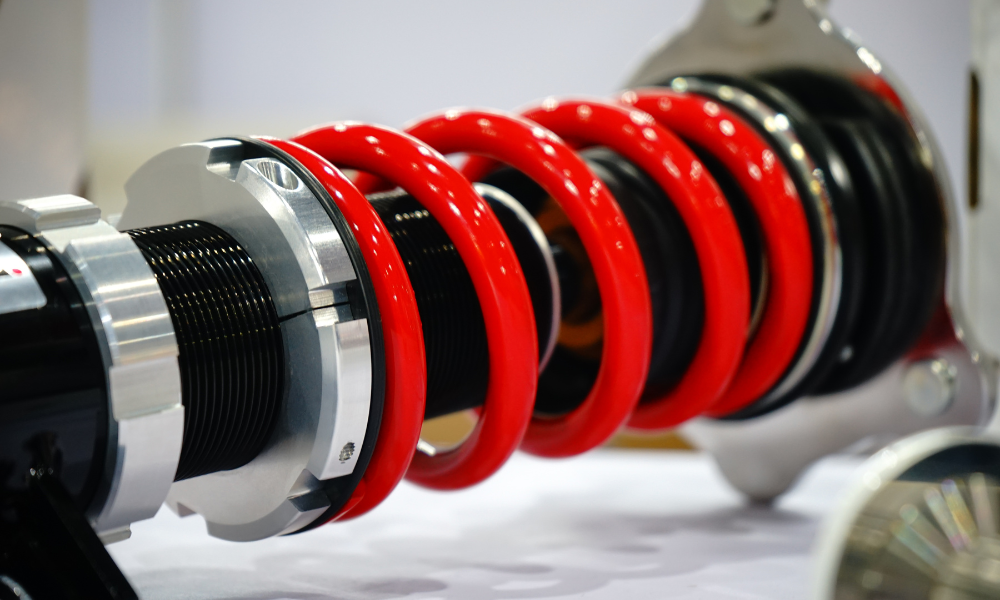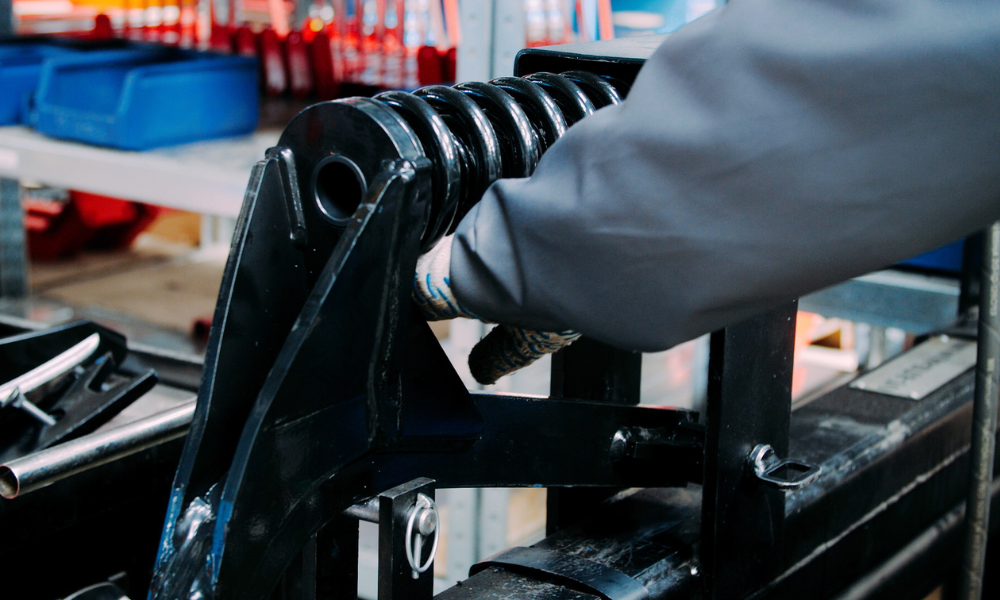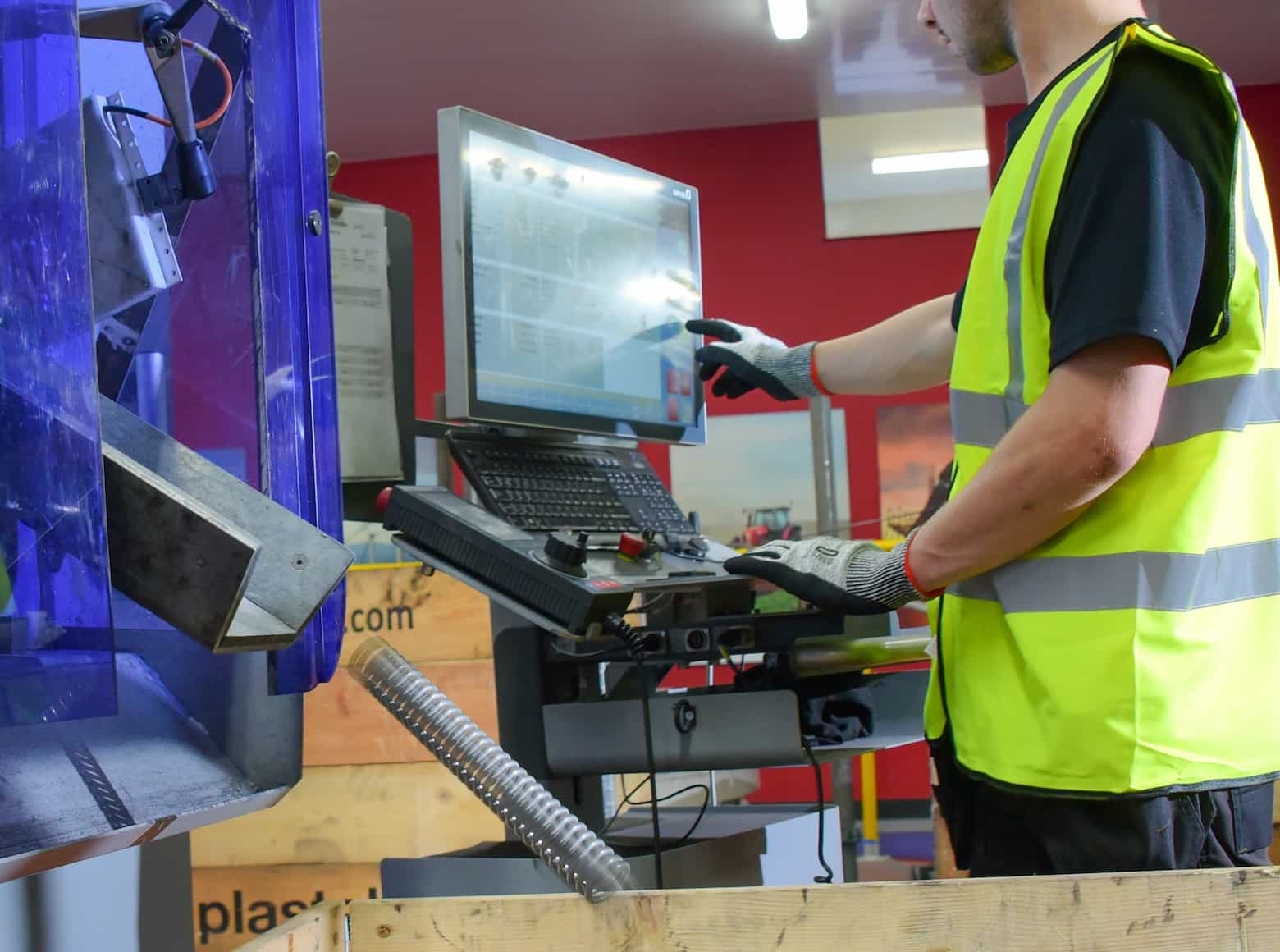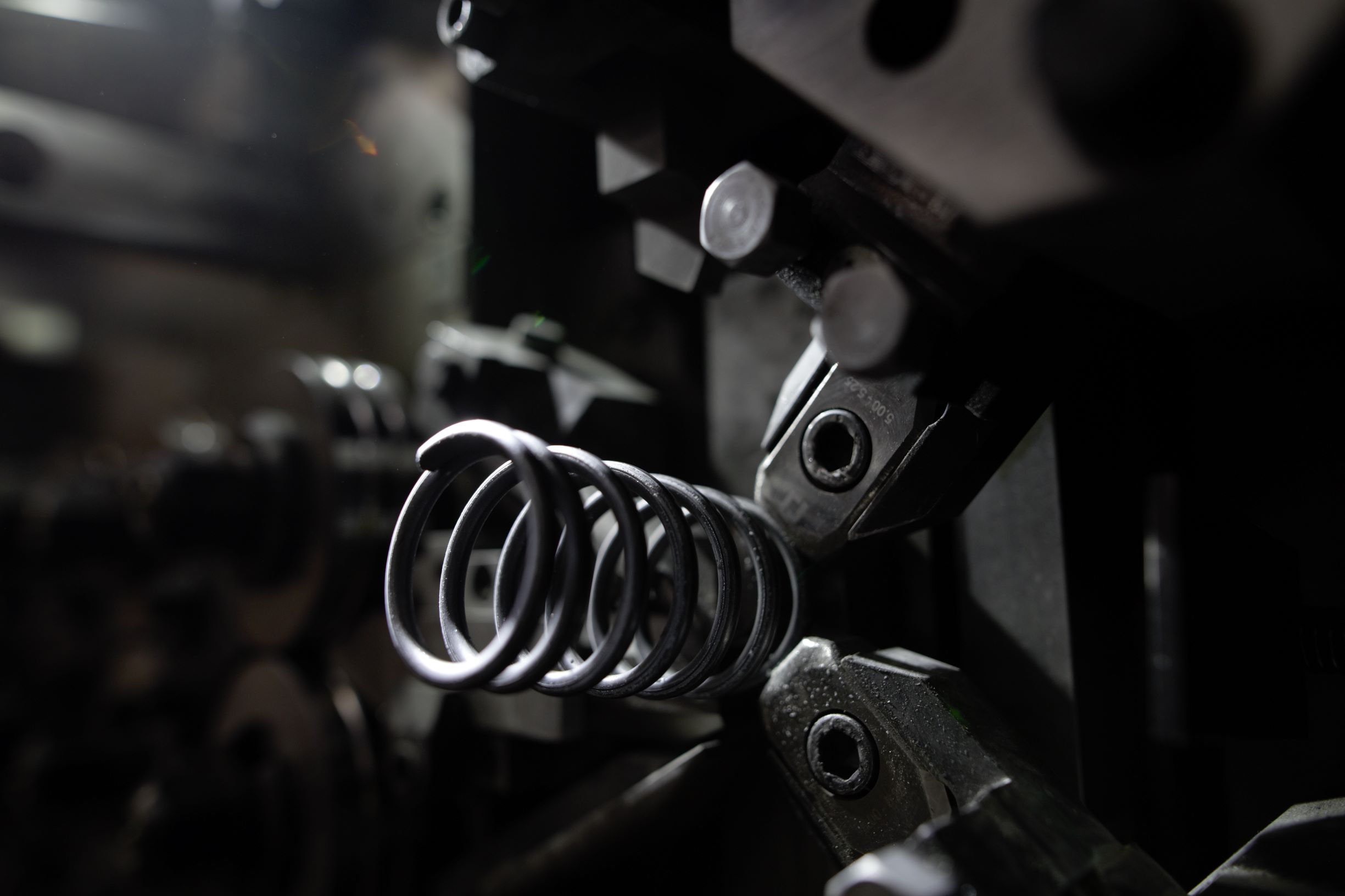Please complete the form below, and one of our experts will be in touch.
If you would like to send a technical drawing with your enquiry, please email heavysprings@lesjoforsab.com

Mechanical coil springs are used in many products, from household items to larger industrial machinery. They absorb shock, maintain force, support structures, and provide solutions for managing force and motion in mechanical systems.
Whilst springs may be simple in appearance, the coil spring manufacturing process uses cutting-edge techniques. This post will outline how spring coils are made in six simple steps and discuss advanced hot and cold coiling technologies.
Coil springs are the backbone of modern engineering. Their unique ability to absorb shock, maintain force, and return to their original shape after compression makes them key components in many products, machinery, and devices. As engineering advances, there are increasing demands for performance, durability and precision. Advanced manufacturing techniques such as CNC machining, 3D scanning and shot peening manufacture coil springs that meet these demands and create high-quality, corrosion-resistant, and durable precision springs.

A coil spring is a mechanical device made from elastic materials, such as metal wire, coiled into a helical shape. This design enables the spring to compress, extend, or rotate under load and then return to its original shape once the load is removed. The properties of coil springs allow them to store energy temporarily and release it as needed, providing solutions for managing force and motion in mechanical systems.
Straight wire is fed into a coiler through coiling rollers. This leads to a set of coiling points that apply pressure and create the coil spring. This method is carried out through hot or cold coiling, depending on the wire size needed.
However, this is just one of six steps in the coil spring manufacturing process.
Let’s review each step in more detail below.
Common spring materials include stainless steel, carbon steel, chrome silicon, chrome vanadium, and speciality materials such as Inconel, elgiloy, and titanium. Non-ferrous metals such as phosphor bronze and beryllium copper may also be used. These materials are selected for their specific properties, which include:
Material choice directly influences performance, making this phase extremely important in the coil spring manufacturing process.
The next step is to calculate the spring specifications, using formulas to determine dimensions, load capacities, spring rates and the spring constant. These calculations ensure the spring can withstand the operational stressors without buckling or experiencing permanent deformation. Engineers also consider space constraints and may conduct simulations to predict the spring's behaviour under different loads and conditions. Advanced spring design software enables detailed modelling and simulation, which allows engineers to optimise designs for maximum efficiency, reliability and performance.

The coiling winding process is a fundamental step in coil spring manufacturing. It involves shaping metal wire into the desired coil form. This process requires precision and control to ensure the resulting spring meets all requirements, including diameter, pitch, and the total number of coils.
CNC (Computer Numerical Control) spring coiling machines are widely used as they allow tight control over winding parameters and enable complex spring shapes and patterns. These machines adjust automatically to different wire diameters and coil geometries, optimising the production process for high- and low-volume runs.
Two primary methods are used in the winding process: cold and hot coiling. The choice of a hot or cold coil is predominantly determined by the wire size that needs to be coiled. Cold winding is performed at room temperature and is typically used for wire diameters up to about 26mm. It allows for high precision and is suitable for most industrial applications. On the other hand, hot winding involves heating the metal before winding (up to 900 degrees celsius) and is used for larger diameters.
Hot winding is necessary for materials that are too stiff or tough to be wound cold. For example, heavy-duty springs used in the gas, mining, and rail sectors can require a hot winding process subject to the size of the wire required.

Heat treatment modifies the coil spring material’s microstructure and improves its mechanical properties. These enhancements include tensile strength, hardness, durability, and resistance to fatigue.
Common heat treatment methods include annealing, quenching, and tempering, which achieve the desired level of hardness and elasticity. Advanced techniques like cryogenic treatment may further enhance the spring's wear resistance and durability.
At Lesjöfors, we use fully automated and computer-controlled systems, plus multiple in-line conveyor belt ovens to deliver a stress-relieving process. This enables the spring to retain its shape and functionality under stress and maximises the demands of the material and spring formation during the coil spring manufacturing process.
Surface treatments improve aesthetic appearance and significantly extend a spring's lifespan. These treatments include painting, galvanising, phosphating, coating with nickel, zinc, and epoxy materials, and plating with metals such as chrome. These methods create protective barriers and modify the surface properties of a spring, minimising corrosion and improving a spring's performance. Each surface treatment offers unique advantages. For example, nickel coating is particularly beneficial for springs exposed to harsh chemicals or extreme temperatures. Plus, galvanised steel is used in environments with moist conditions, where springs are susceptible to rust.

The final step is quality assurance and testing. Standard tests for coil springs include load testing, fatigue testing, and dimensional checks. These tests assess the spring's ability to handle specified stresses, its durability over repeated use cycles, and whether its dimensions align with design specifications.
At Lesjöfors, our quality teams review every step, including drawings, testing procedures, print markings and carrying out the Almen Arc test to review the shot peening. We also ensure compliance with industry standards through the pre-production approval process (PPAP) and first article inspection report (FAIR).
Heavy coil springs are used in various industries, such as construction, energy, and mining. For example, they are used in automotive suspension systems to absorb shocks, in the construction of heavy machinery for vibration control, and within the energy sector, particularly in power plants, to manage the movement and support of large structures. Other applications include:

A coil springs' capacity to handle substantial loads, whether compression, tension, or torsion, makes them useful in applications that demand reliability and longevity.
The landscape of coil spring manufacturing is rapidly evolving, driven by significant technological advancements and a continuous pursuit of efficiency and quality.
The spring rate, or stiffness, indicates how a spring will perform under load. It is defined as the amount of load required to compress the spring by a unit of length. In heavy-duty applications, selecting a spring with the correct spring rate is essential to ensure that the spring can absorb the required forces without compromising its structural integrity or functionality. A higher spring rate indicates a stiffer spring, which is beneficial for applications involving heavy loads, but it must be balanced with the need for flexibility and shock absorption.
Automation and robotics have revolutionised the coil spring manufacturing process, significantly enhancing precision, productivity, and consistency. Integrating robotic systems in coil spring production lines allows for greater control and efficiency in operations, from coiling and heat treatment to inspection and packaging. This technological shift optimises production costs and minimises human error, ensuring higher quality standards.

The future of spring manufacturing technology is set to witness further integration of digital technologies. These advancements promise to streamline production processes further, improve quality control, and enable predictive maintenance. Moreover, our focus on sustainability, Life Cycle Analysis and other eco-friendly manufacturing practices drives developments that reduce environmental impact, marking a new era in coil spring manufacturing.
The coil spring manufacturing process has many stages, including material selection, design and engineering, coiling, heat treatment, surface treatment and finishing, and quality assurance and testing. As specialist heavy spring manufacturing experts, our spring manufacturing process includes advanced hot and cold coiling and uses the largest Wafios CNC coiler in the world.
Working with industry-leading coil spring manufacturers offers numerous advantages, including access to cutting-edge technologies, materials, and engineering expertise. We provide comprehensive support throughout the product lifecycle, from design optimisation to after-sales service, ensuring your springs meet the highest performance and durability standards.
If you need support to design and manufacture high-quality springs, contact us to learn about our world-leading manufacturing process and value-added services.
Do you need guidance to select the best material for your custom spring?
At Lesjöfors, we work with a large range of materials and hold the largest global stocks of chrome silicon and chrome vanadium anywhere in the world. We can also optimise your spring performance with top-quality materials such as steel, copper and titanium alloys and super alloys, such as Inconel, Hastelloy and Nimonic.
Get in touch with our expert team to receive expert guidance and find out how to order a custom spring.
We are world-leading heavy duty spring manufacturers, delivering the greatest expertise in compression, torsion and tension spring manufacturing.
Delivering impact to every industry, we guarantee spring solutions that will optimise your performance and success.

